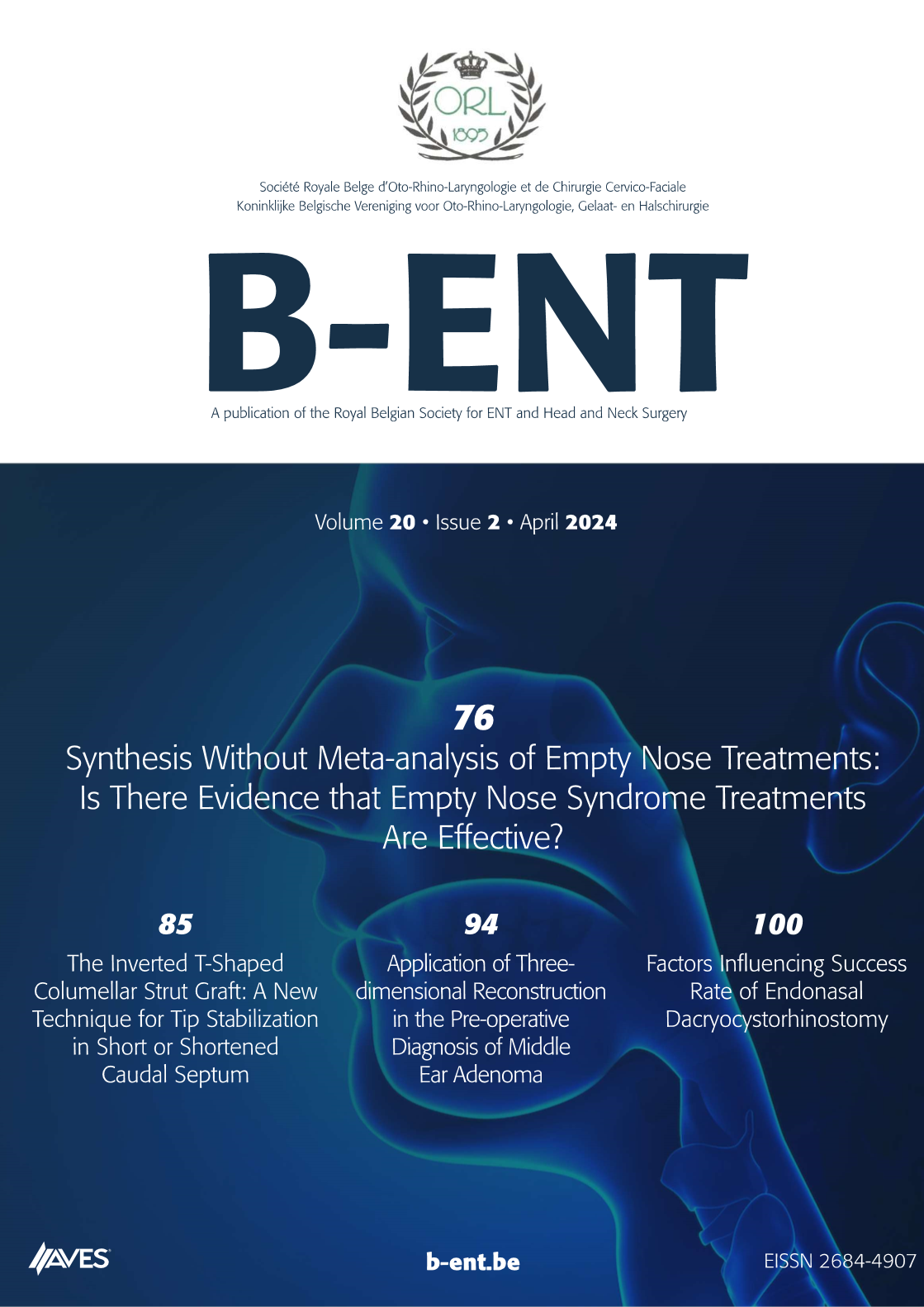Induction chemotherapy followed by supracricoid partial laryngectomy (SCPL) with cricohyoidoepiglottopexy (CHEP) in T3N0 arytenoid fixation-related glottic cancer. Objective: Arytenoid fixation in the larynx has been considered a contraindication for performing organ preservation surgery (OPS). We present a retrospective series of cases of arytenoid fixation-related T3N0 glottic cancer treated by neoadjuvant chemotherapy followed by OPS.
Material: Retrospective review of 19 patients (from 2008 to 2012) with T3N0 glottic cancer who received two cycles of neoadjuvant chemotherapy with a combination of paclitaxel, cisplatin and 5-fluoruracil (PPF), with a 21-day interval between each cycle, followed by supracricoid partial laryngectomy (SCPL) with cricohyoidoepiglottopexy (CHEP).
Results: Sixteen patients with a mean age of 56.4 years received neoadjuvant chemotherapy with a clinical response (7 partial response/9 complete response) and radiologic response by computed tomography (CT) (7 partial response/7 complete response/2 cases without CT) were treated with SCPL-CHEP and removal of the arytenoid cartilage in the tumour site (10 left/6 right), bilateral neck dissection of levels II to V and searching of the Delphian node. There was one patient who died after a recurrence in the larynx and who also had an additional concomitant second primary tumour, and a second patient with a second primary tumour in the lung, who is still alive after treatment. Disease-free survival (DFS) was 82.5% at 5 years and overall survival (OS) was 80% at 5 years.
Conclusion: Neoadjuvant chemotherapy proved beneficial in patients waiting for surgery, helped maximize the oncologic benefit of the surgery provided (good local control using SCPL with CHEP), improved regional and distant control, minimized side effects by avoiding treatment with radiotherapy whenever possible, and proved feasible even in the presence of ipsilateral arytenoid fixation. Our results are encouraging, although a multi-centre randomized clinical trial should be performed in order to identify the true impact of this approach.



.png)
